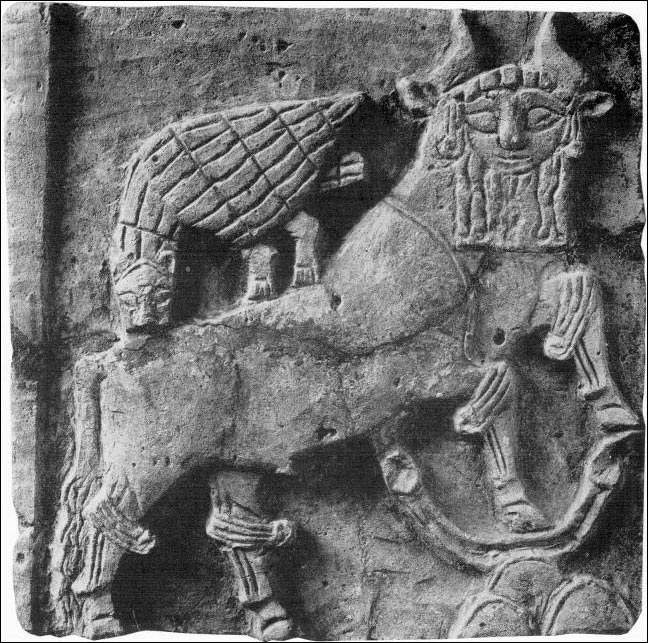 |
Date Giedion dates it ca. 2500 B.C Origin The Ancient World : The Middle East : Pre-Sargonid Period Description Bearded, horned bull with human features standing with forefeet on mountain surmounted by crescent; Imdugud, lioness-headed eagle, standing on back of bull biting its rump. "...A wild bull, as though escaped from a primeval period [is shown] clambering up a mountain. The Imdugud bird, with folded wings, symbolizing the combative forces of preservation and destruction, sits perched on its back" [--Giedion] "and rends the beast's hindquarters with its sharp teeth [--Van Buren, in AFO]. Frankfort (in Kingship) notes that vegetation withers in the extreme dry summer heat in Mesopotamia. Under such conditions, generative forces are of the earth rather than the sun; water belongs to the wells and ditches of the earth. In the spring Ningirsu, god of rain and fertility, was thought to send water from the mountains in the form of Imdugud, the lion-headed eagle, whose outspread wings were thought of as black storm clouds. In this interpretation, Imdugud is the vanquisher of the bull of heaven whose hot breath has seared the land. Parrot comments that such mythological or imaginary scenes contain four types of figures grouped in pairs which played major roles in Sumerian art: man and bull, eagle and lion. Object Plaque (relief; limestone). Style or School Sumerian. First Dynasty of Ur. Material or Technique Sculpture (detail). Provenance Found at al 'Ubaid. Repository or Site Philadelphia: Mus., University. Image Sources from Giedion.* [JF 2365] References *Giedion, S., ...Architecture (1964), pp.62-3; fig.25. Woolley, C.L., Development (1935), p.89; pl.47b. Parrot, A., Sumer (1961), p.133; pl.161c. AFO, X (1935), p.237. Frankfort, H., Intellectual (1946), p.6. Frankfort, H., Kingship (1948), p.282. |